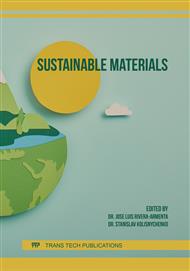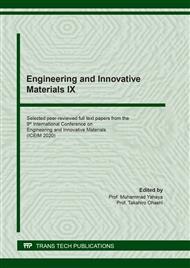p.49
p.57
p.63
p.71
p.77
p.83
p.89
p.97
p.103
Hydrothermal Synthesis of Binder-Free Kapok (Ceiba pentandra) Fiber Paper-NiCo2O4 Supercapacitor Electrode
Abstract:
There is a need to address the gap between the theoretical benefits and cost-efficient production of supercapacitors in the market in order to sway the preference of the industry from the current perishable energy sources and storage. More extensive exploration of sustainable fabrication methods and materials used for renewable energy storage are just some of the factors that would decrease this gap. A binder-free supercapacitor electrode made of NiCo2O4 and carbonized kapok fiber paper (CKFP) was successfully fabricated by hydrothermal process at relatively low temperatures. NiCo2O4 urchin-like structures were deposited on the surface of carbon fiber paper (CFP) and CKFP. XRD analysis confirmed the successful conversion of kapok fiber paper to CKFP after pyrolysis, as well as the growth of pure spinel NiCo2O4 nanostructures on CFP and CKFP. The cyclic voltammetry curves showed that the CFP-NiCo2O4 prepared at 140 °C had the highest specific capacitance of 143.51 Fg-1 at 2 mVs-1. The CKFP-NiCo2O4 synthesized at the same temperature yielded slightly higher specific capacitance of 146.29 Fg-1 at 2 mVs-1, and 508 Fg-1 at 0.5 Ag-1.
Info:
Periodical:
Pages:
77-82
Citation:
Online since:
March 2021
Authors:
Price:
Сopyright:
© 2021 Trans Tech Publications Ltd. All Rights Reserved
Share:
Citation:



